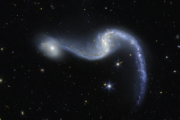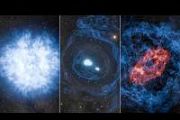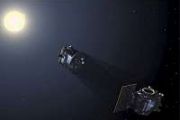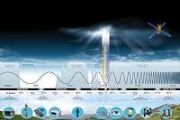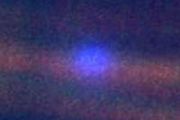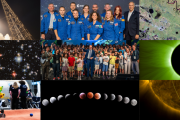
Copernical Team
Computer models point to crew diversity as key to resilient Mars missions
 Simulation results from Stevens Institute of Technology researchers Iser Pena and Hao Chen indicate that who you send to Mars matters as much as what you send. Published October 8, 2025 in PLOS One, the study used agent-based modeling to probe how personality mix and team roles shape stress, health, performance, and cohesion over a simulated 500-day mission.
The model linked individual dif
Simulation results from Stevens Institute of Technology researchers Iser Pena and Hao Chen indicate that who you send to Mars matters as much as what you send. Published October 8, 2025 in PLOS One, the study used agent-based modeling to probe how personality mix and team roles shape stress, health, performance, and cohesion over a simulated 500-day mission.
The model linked individual dif University of Mississippi Law School launches first fully online Air and Space Law master's degree
 The University of Mississippi School of Law has introduced the nation's first fully online Master of Science in Air and Space Law, designed to equip professionals for leadership roles in the fast-growing aerospace sector. Created in collaboration with instructional design firm iDesign, the program delivers a comprehensive legal foundation for those working in aviation, commercial space, and emer
The University of Mississippi School of Law has introduced the nation's first fully online Master of Science in Air and Space Law, designed to equip professionals for leadership roles in the fast-growing aerospace sector. Created in collaboration with instructional design firm iDesign, the program delivers a comprehensive legal foundation for those working in aviation, commercial space, and emer Trump jeopardising US role as scientific leader: Nobel officials
 Donald Trump's assault on science could threaten the United States' position as the world's leading research nation and have knock-on effects worldwide, Nobel Prize officials in Sweden told AFP.
Since taking office in January, the US president has cut billions of dollars in funding, attacked universities' academic freedoms and overseen mass layoffs of scientists across federal agencies.
Donald Trump's assault on science could threaten the United States' position as the world's leading research nation and have knock-on effects worldwide, Nobel Prize officials in Sweden told AFP.
Since taking office in January, the US president has cut billions of dollars in funding, attacked universities' academic freedoms and overseen mass layoffs of scientists across federal agencies. Rocket Lab widens iQPS partnership with three more dedicated Electron launches starting 2026
 Rocket Lab has signed a new multi-launch agreement with Japan's Institute for Q-shu Pioneers of Space (iQPS), adding three dedicated Electron missions from Launch Complex 1 in New Zealand beginning no earlier than 2026 and making Rocket Lab the primary launch provider for the QPS-SAR constellation.
The additional flights lift iQPS's upcoming Electron manifest to seven, on top of four alrea
Rocket Lab has signed a new multi-launch agreement with Japan's Institute for Q-shu Pioneers of Space (iQPS), adding three dedicated Electron missions from Launch Complex 1 in New Zealand beginning no earlier than 2026 and making Rocket Lab the primary launch provider for the QPS-SAR constellation.
The additional flights lift iQPS's upcoming Electron manifest to seven, on top of four alrea Raytheon and Anduril achieve breakthrough test in advanced rocket propulsion
 Raytheon, an RTX business, and Anduril Industries have completed a successful static fire test of an advanced solid rocket motor under contract with the U.S. Air Force Research Laboratory's Munitions Directorate. The achievement marks a major step toward expanding U.S. rocket motor production and strengthening the defense industrial base.
With global demand for munitions rising, the test u
Raytheon, an RTX business, and Anduril Industries have completed a successful static fire test of an advanced solid rocket motor under contract with the U.S. Air Force Research Laboratory's Munitions Directorate. The achievement marks a major step toward expanding U.S. rocket motor production and strengthening the defense industrial base.
With global demand for munitions rising, the test u DLR's ATHEAt Flight Experiment Achieves Hypersonic Milestone Over Norway
 The German Aerospace Center (DLR) has successfully launched its ATHEAt flight experiment from Andoya, Norway, marking a major advance in reusable space transportation technology. The sounding rocket lifted off on 6 October 2025 at 10:45 local time, flying for approximately four minutes and surpassing Mach 9 for two of those minutes - conditions comparable to atmospheric re-entry.
During th
The German Aerospace Center (DLR) has successfully launched its ATHEAt flight experiment from Andoya, Norway, marking a major advance in reusable space transportation technology. The sounding rocket lifted off on 6 October 2025 at 10:45 local time, flying for approximately four minutes and surpassing Mach 9 for two of those minutes - conditions comparable to atmospheric re-entry.
During th Mars dust devils point to planet wide gale force winds
 Despite Mars's tenuous air, winds there play a dominant role in climate and dust transport. An international team led by the University of Bern reports that dust devils and the winds enveloping them routinely surge to 44 m/s, roughly 160 km/h, far exceeding earlier assumptions based on surface measurements.
The study mined European orbiter data from CaSSIS on ESA's ExoMars Trace Gas Orbite
Despite Mars's tenuous air, winds there play a dominant role in climate and dust transport. An international team led by the University of Bern reports that dust devils and the winds enveloping them routinely surge to 44 m/s, roughly 160 km/h, far exceeding earlier assumptions based on surface measurements.
The study mined European orbiter data from CaSSIS on ESA's ExoMars Trace Gas Orbite Blue Origin launches 15th space flight for tourists
 Space tourism company Blue Origin launched six people in Texas on its 15th mission in the growing orbital tourism industry.
Blue Origin's mission NS-36, space flight saw liftoff at 8:40 a.m. CDT via its launch site in west Texas after a 9:30 a.m. launch window opened for its suborbital journey in the 36th flight for its reusable rocket-capsule New Shepard.
"Hugs all around," an a
Space tourism company Blue Origin launched six people in Texas on its 15th mission in the growing orbital tourism industry.
Blue Origin's mission NS-36, space flight saw liftoff at 8:40 a.m. CDT via its launch site in west Texas after a 9:30 a.m. launch window opened for its suborbital journey in the 36th flight for its reusable rocket-capsule New Shepard.
"Hugs all around," an a Asteroid near Earth detected hours after it passed the planet
 International space agencies say an asteroid zipped by Earth closer than a large number of satellites currently in orbit, but was not detected until hours later.
The European Space Agency said Monday that a 3- to 10-foot-wide asteroid was picked up by radar last Wednesday some 265 miles above Earth over Antarctica, near Earth's most southern point, at an altitude similar to that of the
International space agencies say an asteroid zipped by Earth closer than a large number of satellites currently in orbit, but was not detected until hours later.
The European Space Agency said Monday that a 3- to 10-foot-wide asteroid was picked up by radar last Wednesday some 265 miles above Earth over Antarctica, near Earth's most southern point, at an altitude similar to that of the Space Ocean and Space Nukes Forge Alliance to Develop Deep Space Power Systems
 Space Ocean Corp, a leader in orbital logistics and in-space resource delivery, has signed a Letter of Intent (LOI) with Space Nuclear Power Corporation (Space Nukes) to explore the integration of advanced nuclear reactor technology into future deep-space missions.
The collaboration centers on testing Space Nukes' 10-kilowatt nuclear reactor aboard Space Ocean's ALV-N satellite. Upon meeti
Space Ocean Corp, a leader in orbital logistics and in-space resource delivery, has signed a Letter of Intent (LOI) with Space Nuclear Power Corporation (Space Nukes) to explore the integration of advanced nuclear reactor technology into future deep-space missions.
The collaboration centers on testing Space Nukes' 10-kilowatt nuclear reactor aboard Space Ocean's ALV-N satellite. Upon meeti 












